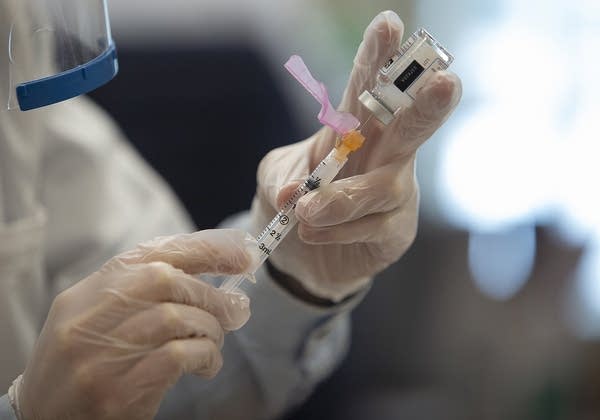A tale of two dentists: Why some providers are getting vaccinated and some aren’t

Go Deeper.
Create an account or log in to save stories.
Like this?
Thanks for liking this story! We have added it to a list of your favorite stories.
When Rochester, Minn., dentist Deborah Majerus heard that people who work for Mayo Clinic’s employee credit union had gotten COVID-19 vaccines, she was confused.
For weeks, she had been calling the local public health department and Mayo Clinic to find out when and how her staff would be vaccinated against the coronavirus. She and her employees are lumped into a group of health care providers who are in direct contact with patients, but work independently of a large health care system.
“I've been told to wait patiently,” Majerus said. “And when we start to have patients coming into our chairs saying, ‘oh I got my first dose,’ and you can see they're not in direct patient contact or more medically compromised, it starts to get more and more disheartening."
Adding to her confusion is Minnesota’s efforts to add a new group of people age 65 and older to the list of those eligible for the COVID-19 vaccine. Doctors, eye doctors, retail pharmacists and others who were in line to get inoculated next say they remain confused about when and how they will get their shots.
Turn Up Your Support
MPR News helps you turn down the noise and build shared understanding. Turn up your support for this public resource and keep trusted journalism accessible to all.
At the same time, in some Minnesota counties, people in that group have already gotten their vaccine.
Variability from region-to-region in who is getting vaccinated underscores a complicated mix of vaccine supply, demographics and workforce needs at play in determining who’s next in line for a shot.
Right now, the state is focusing on vaccinating health care providers who are not affiliated with a major health care system — meaning dentists, pharmacists, eye doctors and in-home nurses, among others.
Christina Peterson, vice president of operations for Unifeye Vision Partners, said this stage of the state’s rollout has been slow to start, in part because some eye doctors are not affiliated with a large health care system.
“Due to the lack of clear guidance — and this case basic communication — we have wasted precious time while trying to predict next moves in an unknown situation,” said Peterson at a legislative hearing on the issue. “County representatives who have said ‘someone will follow-up with you, it’s not your turn.’ We have emailed health systems with zero response, and have made phone calls to numbers that are no longer operational.”

A tale of two dentists
In addition to communication gaps, there’s great variability around the state in who is able to get shots right now, and it comes down to demographics, workforce needs and vaccine supply.
The state is not getting enough vaccine doses weekly to vaccinate everyone at once. Meanwhile, counties with few healthcare workers directly caring for patients have been able to move ahead faster than counties that have many of them.
Majerus says the variability is confusing and that her employees are at high risk of contracting the virus.
“[The state] keeps changing the guidelines,” she said. “Are dentists going to be put on the backburner?”
This week, Olmsted County, which includes Rochester, said it was beginning to communicate with independent providers such as Majerus about vaccinations, and Mayo says it will likely be administering shots to workers in this group.
But Majerus points out that part of the frustration and confusion around the vaccine rollout is attributed to an inconsistent interpretation of the state's guidance around who should be getting shots right now.
While the Minnesota Department of Health said vaccinations right now should focus on health care providers who can't work from home, Mayo Clinic said, for instance, some employee credit union workers who work on its campus have already gotten shots. Mayo says it is working to vaccinate workers who come on-site to better protect staff and patients.
The Health Department says workers such as credit union employees are not considered essential health care workers under the phase 1a of the state’s vaccination plan and that prioritizing them for vaccination at this time is outside the scope of all existing guidance.
Meanwhile, in Owatonna, Minn., dental receptionist Emily Cochran got her shot this week through Steele County Public Health after being sent a link by her employer to sign up. That’s in part because the county was able to move through it’s front-line health care workers faster than expected.
“It was all a drive-through. I didn't have to get out of my car or anything,” Cochran said of the system the county has had up and running since early January.
For it’s part, the state Health Department says it’s in the process of collecting better data on who in this group has been vaccinated, and creating a portal for providers to ensure they get their shots on time.
COVID-19 in Minnesota
Data in these graphs are based on the Minnesota Department of Health's cumulative totals released at 11 a.m. daily. You can find more detailed statistics on COVID-19 at the Health Department website.
The coronavirus is transmitted through respiratory droplets, coughs and sneezes, similar to the way the flu can spread.




